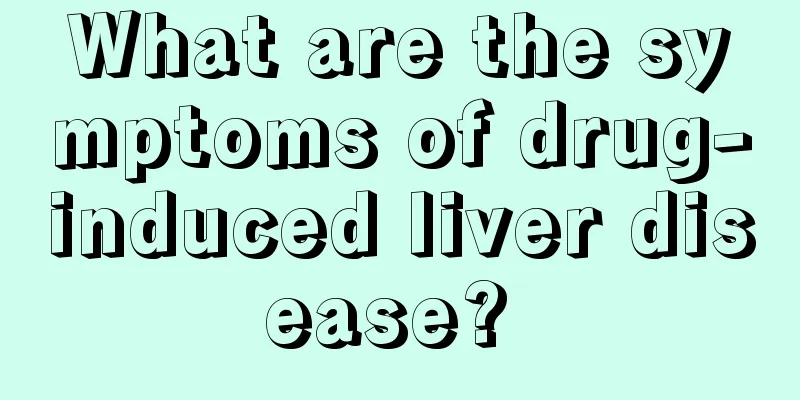What are the symptoms of drug-induced liver disease?

|
Drug-induced liver disease actually refers to liver damage caused by drugs taken by patients. Because drugs will cause certain damage to the liver, if this type of drug is taken, drug-induced liver disease will occur. Generally, patients with drug-induced liver disease will experience poor appetite, nausea, yellow complexion, cold stomach, etc. So friends should try to take less medicine in their lives. What are the symptoms of drug-induced liver disease? Patients with drug-induced liver disease may experience any of the symptoms of liver disease. According to the duration of the disease, drug-induced liver disease can be divided into two categories: acute (resolving within 6 months) and chronic (more than 6 months). Li Yuyuan said that chronic liver damage is generally mild, while acute liver damage accounts for more than 90% of cases, among which a small number of patients will develop liver failure, which is life-threatening. According to clinical manifestations, drug-induced liver disease can be divided into three types: hepatitis type, cholestasis type and mixed type. 1. The hepatitis type is common and is characterized by elevated transaminase. Patients experience fatigue, poor appetite, upper abdominal distension, nausea, and vomiting, followed by mild jaundice. Laboratory test results show a significant increase in transaminase. Severe cases may present with acute liver failure, complicated by hepatic coma and death. 2. The cholestatic type is characterized by jaundice. Patients have symptoms such as fever, chills, nausea, abdominal distension, fatigue, and rash at the onset of the disease. Jaundice then appears and gradually deepens, accompanied by symptoms such as skin itching and liver pain. Laboratory test results show a significant increase in bilirubin, and liver failure rarely occurs. 3. The mixed type is rare, and the symptoms are between the above two types. Patients with idiosyncratic (allergic) drug reactions often have fever, arthritis, rash, and increased blood acid cells. Usually, doctors are particularly cautious when diagnosing drug-induced liver disease. Li Yuyuan pointed out that a judgment can only be made after comprehensively considering the medication history, clinical manifestations, laboratory results and observing the effects of drug withdrawal, and excluding other liver diseases. |
<<: Cerebellar infarction? Find the right treatment and recover quickly
>>: Why does the big toe nail turn black?
Recommend
What are the functions of combing hair
Everyone knows that the human head is home to man...
How to treat angular cheilitis
We may encounter various diseases in our daily li...
Why is durian flesh hard
If the durian flesh is hard, it means it is not f...
Can folic acid tablets help with pregnancy?
Although young couples nowadays are not in a hurr...
Why am I always so pessimistic?
Negative emotions such as pessimism are easy to a...
Why is my chest feeling a bit stuffy?
The phenomenon of chest tightness is very common ...
Particle implantation for the treatment of central lung tumors
In recent years, the incidence and death toll of ...
How to do basic waist bending skills
Many people who want to learn dance know that the...
What does acidic urine mean?
Urine is acidic, which means that some changes wi...
How to get rid of cockroaches most effectively
Cockroaches are common insects in our lives, and ...
What exactly is the feeling of having a foreign body in the eye?
If there are symptoms of foreign objects in the e...
Can Enoki mushrooms and shrimp be eaten together
Enoki mushrooms are a common edible fungus with h...
Is it necessary to undergo genetic testing before targeted treatment for colon cancer?
Generally, patients are advised to undergo a gene...
Does using lubricant affect pregnancy
Lubricants are meant to increase the diversity an...
Is hot compress on the cervical spine effective?
When you suffer from cervical spondylosis, you sh...









